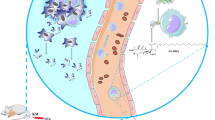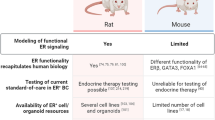Abstract
Rapid evaluation of new cytotoxic agents and biological response modifiers for therapy of cancer and elucidation of their mechanisms of action require the use of relevant animal models. It is well established that the faithful reproduction of the tumor microenvironment that allows the emergence of subpopulations of tumor cells with the biological and metastatic properties observed in clinical cancer occurs with orthotopic tumor models (transplantable and transgenic). This review summarizes the evidence that phenotypic properties of metastatic cells are governed by the expression of genes that are regulated by interaction with the relevant organ environment. While ectopic models of cancer allow rapid screening of new compounds and transgenic models afford opportunities to study early cellular and molecular events in tumor progression and metastasis, orthotopic transplantation of tumor cells remains an affordable, reproducible and reliable methodology for the study of organ-specific determinants of the biology and therapy of cancer.
Similar content being viewed by others
Author information
Authors and Affiliations
Rights and permissions
About this article
Cite this article
Killion, J.J., Radinsky, R. & Fidler, I.J. Orthotopic Models are Necessary to Predict Therapy of Transplantable Tumors in Mice. Cancer Metastasis Rev 17, 279–284 (1998). https://doi.org/10.1023/A:1006140513233
Issue Date:
DOI: https://doi.org/10.1023/A:1006140513233




